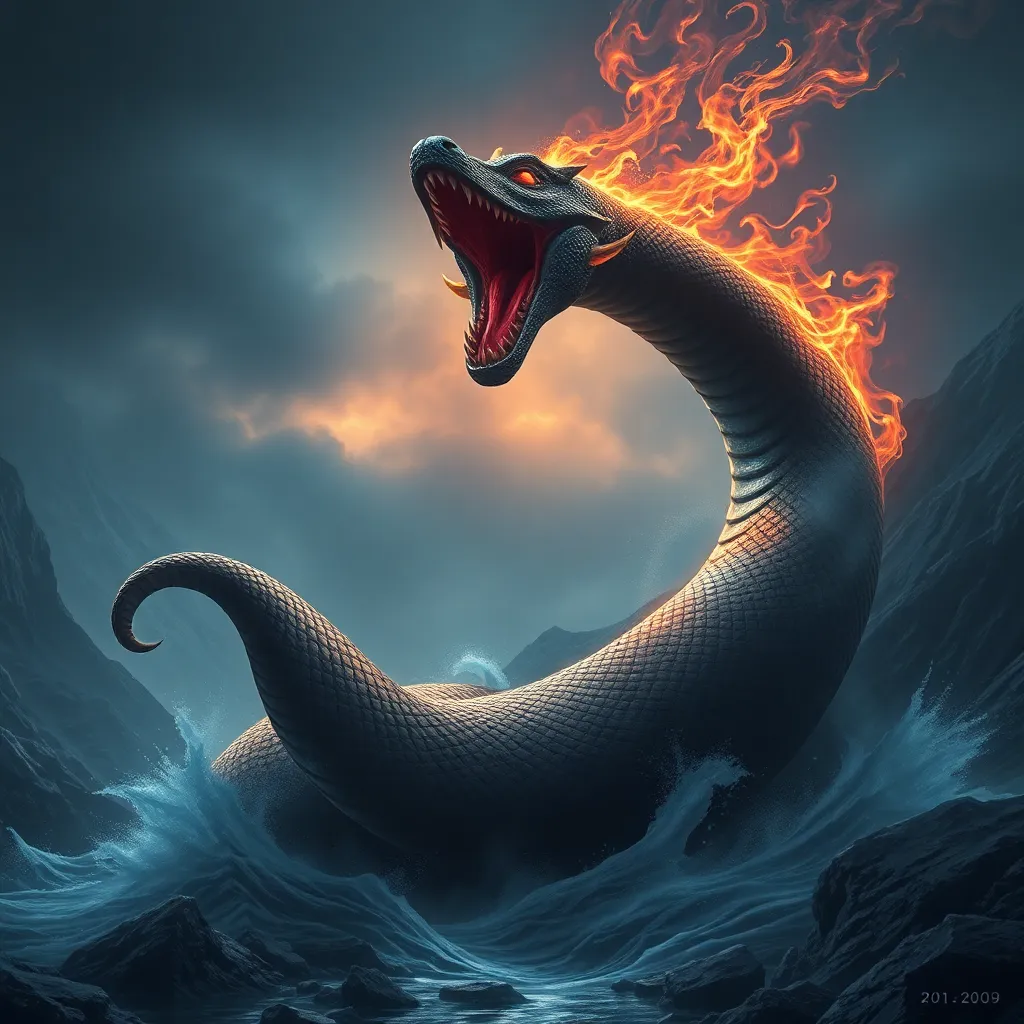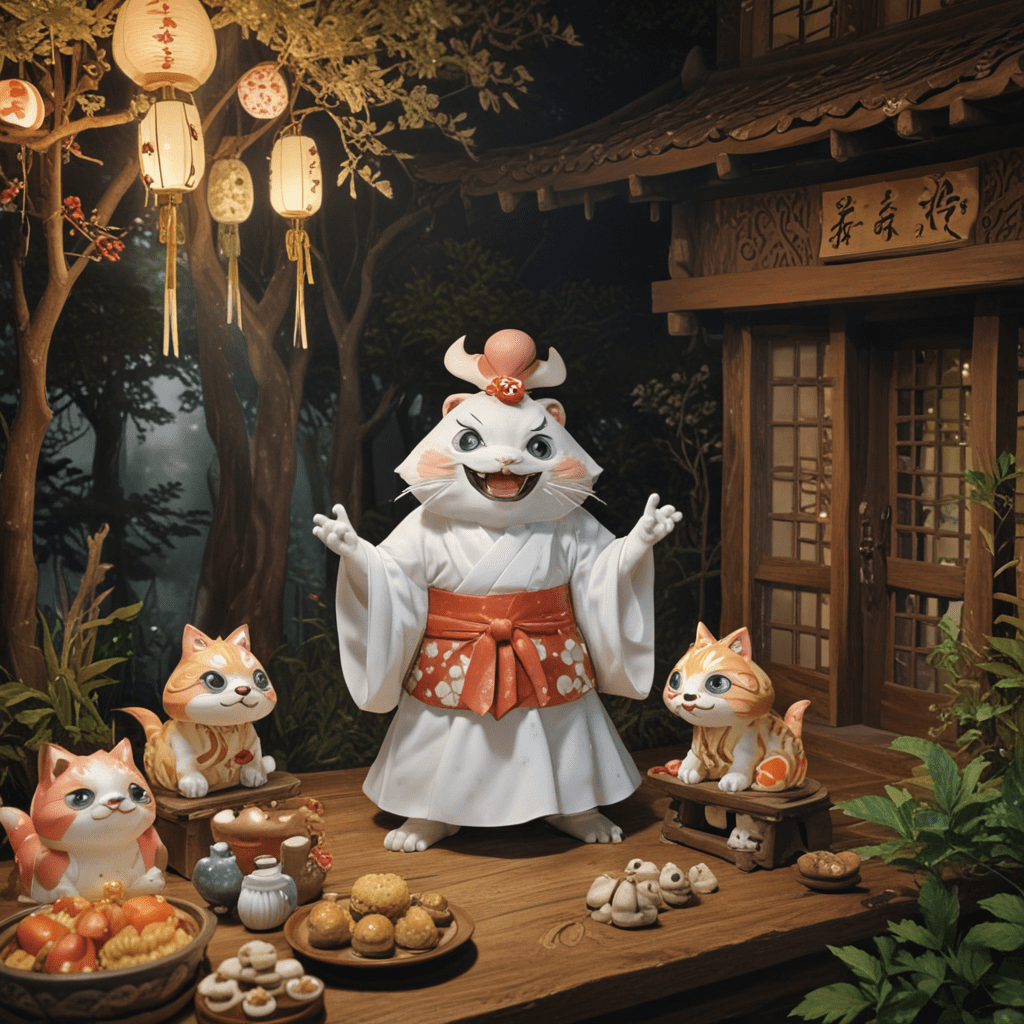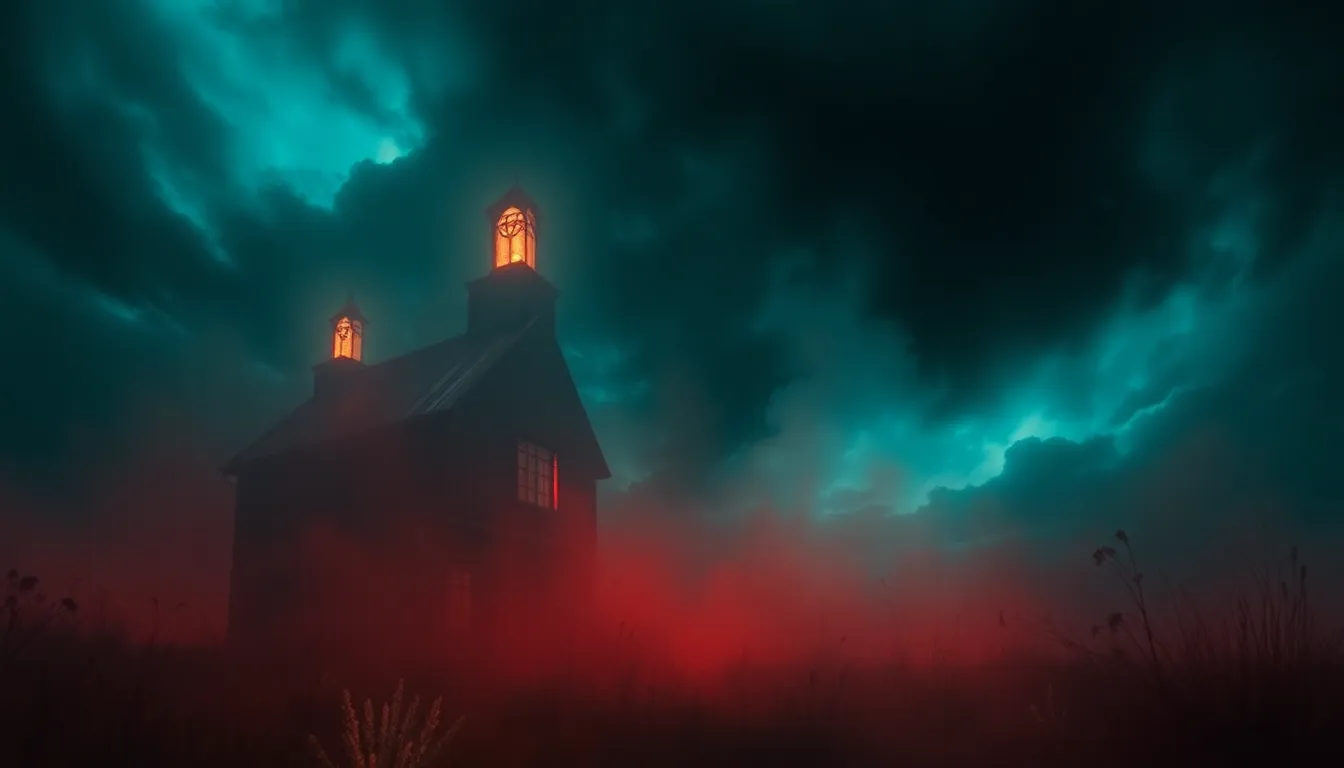The Serpent’s Bite: Jörmungandr’s Fatal Role in Ragnarok
I. Introduction
Norse mythology is a rich tapestry of stories, gods, and creatures, intricately woven together to explain the mysteries of life, death, and the universe. Among its many figures, Jörmungandr, also known as the World Serpent, holds a particularly ominous place in these narratives. This colossal serpent, born of the trickster god Loki and the giantess Angerboda, is not just a creature of myth; he embodies the very essence of chaos and destruction. This article aims to delve into Jörmungandr’s pivotal role in Ragnarok, the cataclysmic series of events that signify the end of the world in Norse lore.
II. The Origins of Jörmungandr
A. Birth and family background
Jörmungandr’s story begins with his unusual parentage. As the middle child of Loki, the god of mischief, and Angerboda, a giantess, he is part of a lineage that is both powerful and feared.
- Parentage: Loki and Angerboda
- Siblings: Fenrir, the monstrous wolf, and Hel, the goddess of the underworld
Raised among the giants, Jörmungandr’s connection to Loki puts him at odds with the Aesir, the principal pantheon of Norse gods, particularly Thor, the god of thunder.
B. The serpent’s banishment to the ocean
Due to the fear of the havoc that Jörmungandr could wreak, Odin, the chief of the Aesir, decided to cast him into the depths of the ocean that encircles Midgard, the world of humans. Here, Jörmungandr would grow to an enormous size, eventually becoming so large that he could encircle the Earth and grasp his own tail, a symbol of infinity and the cyclical nature of existence.
III. Jörmungandr’s Characteristics and Powers
A. Size and physical description
Jörmungandr is often depicted as an immense serpent, capable of wrapping around the Earth. His size is not just physical; it represents the overwhelming power of chaos and destruction that he embodies.
B. Symbolism of the serpent in Norse lore
In Norse mythology, serpents often symbolize danger, chaos, and the unknown. Jörmungandr’s existence represents the lurking threats in the world, always ready to emerge and disrupt the order established by the gods.
C. Jörmungandr’s role as a guardian of the seas
While Jörmungandr is a creature of destruction, he also serves as a guardian of the seas. His presence signifies the boundaries between the realms, marking the transition from the known to the unknown, from order to chaos.
IV. The Prophecy of Ragnarok
A. Overview of Ragnarok in Norse mythology
Ragnarok is the prophesied end of the world, a series of events that will lead to the death of many gods, the submersion of the Earth in water, and its eventual rebirth. It is a cycle of destruction and regeneration, reflecting the inevitability of change.
B. Key prophecies involving Jörmungandr
Jörmungandr plays a crucial role in several prophecies associated with Ragnarok. According to the myths, it is foretold that he will rise from the ocean, causing the seas to boil and bringing forth the end times.
C. The significance of the serpent’s role in the end times
Jörmungandr’s emergence during Ragnarok is symbolic of the unleashing of chaos. His battle with Thor is not merely a physical confrontation but a representation of the struggle between order and chaos, fate and free will.
V. The Fateful Encounter: Jörmungandr vs. Thor
A. The buildup to the final battle
As Ragnarok approaches, the tension between Jörmungandr and Thor escalates. Their animosity is rooted in their opposing natures: Thor represents order and protection, while Jörmungandr embodies chaos and destruction.
B. Details of the confrontation during Ragnarok
During the battle of Ragnarok, Thor finally confronts Jörmungandr. Their fight is fierce and cataclysmic, shaking the very foundations of the world. Thor hurls his mighty hammer, Mjölnir, at the serpent, while Jörmungandr strikes back with his venomous fangs.
C. The implications of their fight for the cosmos
The outcome of their battle is grave. Thor ultimately succeeds in killing Jörmungandr, but the serpent’s venom is fatal, and he succumbs to its effects shortly after. This mutual destruction symbolizes the delicate balance of existence, where order and chaos can only coexist for a limited time.
VI. The Aftermath of Jörmungandr’s Bite
A. The consequences of Jörmungandr’s actions
Jörmungandr’s rise and fall during Ragnarok have far-reaching implications. His actions lead to the death of Thor and the downfall of the Aesir, marking a significant turning point in Norse cosmology.
B. Thor’s demise and its impact on the Aesir
Thor’s death signifies not just the loss of a powerful god but also the shattering of the order that the Aesir fought to protect. It leaves the realms vulnerable to chaos, leading to a period of uncertainty and fear.
C. The balance of life and death in the aftermath
After Ragnarok, the world is reborn, illustrating the cyclical nature of existence. Jörmungandr’s death and Thor’s demise are part of a larger pattern, where destruction paves the way for renewal.
VII. Symbolic Interpretations of Jörmungandr’s Role
A. The serpent as a representation of chaos and order
Jörmungandr embodies the duality of chaos and order, illustrating how these forces are interdependent. His existence challenges the Aesir, ultimately leading to their downfall and the world’s rebirth.
B. Jörmungandr’s connection to themes of fate and destiny
The serpent’s role in Ragnarok highlights the Norse belief in fate. Despite the gods’ efforts to maintain order, the prophecy surrounding Jörmungandr foretells their inevitable demise, emphasizing the inescapable nature of destiny.
C. Cultural reflections on the cycle of destruction and rebirth
Jörmungandr’s story resonates with cultural narratives that emphasize the importance of cyclical destruction and rebirth. This theme is prevalent in many mythologies, reflecting humanity’s understanding of life, death, and renewal.
VIII. Conclusion
A. Recap of Jörmungandr’s significance in Ragnarok
Jörmungandr’s role in Ragnarok is multifaceted, representing chaos, the struggle between order and disorder, and the inevitability of fate. His interactions with Thor are central to the narrative, culminating in a battle that defines the end of the world.
B. The lasting legacy of the World Serpent in modern interpretations
The myth of Jörmungandr continues to influence modern storytelling, embodying themes of conflict, chaos, and the cyclical nature of existence. His legacy is evident in literature, film, and other cultural expressions, keeping the Norse myths alive.
C. Final thoughts on the importance of understanding mythological narratives
Understanding Jörmungandr’s role in Norse mythology offers valuable insights into the human experience. These narratives reflect our fears, hopes, and the complex interplay between chaos and order, making them relevant across time and culture.




